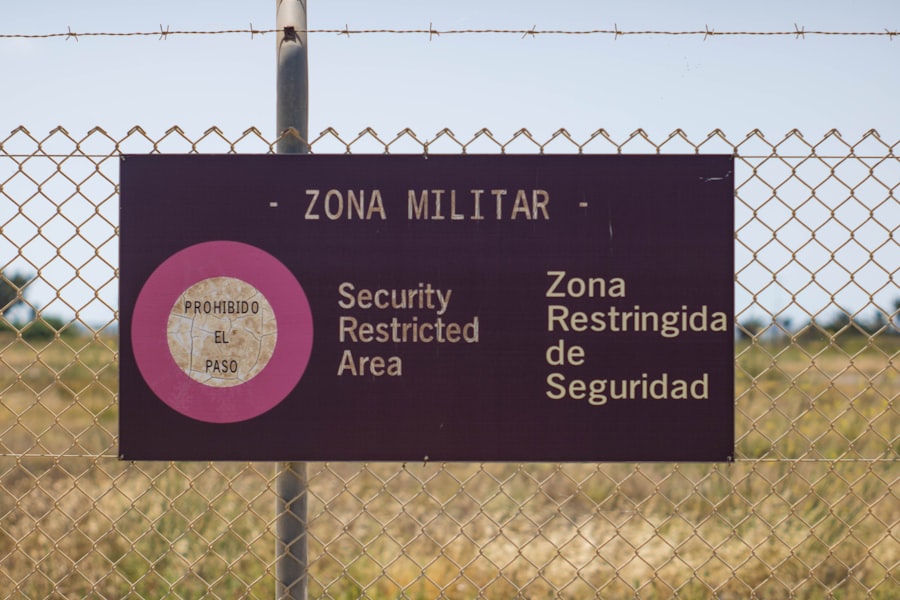The Moon, Earth’s closest celestial neighbor, has long captured the imagination of humanity. As nations advance their space exploration capabilities, the prospect of militarizing the Moon has emerged as a significant topic of discussion. The idea of establishing military bases on the lunar surface raises questions about the future of international relations, security, and the ethical implications of weaponizing outer space.
As countries like the United States, China, and Russia invest in lunar missions, the potential for military presence on the Moon becomes increasingly plausible. This article delves into the historical context of lunar exploration, the strategic advantages of military bases, and the broader implications for global power dynamics. The militarization of the Moon is not merely a theoretical concept; it is a reflection of humanity’s ongoing quest for dominance in space.
As nations recognize the strategic importance of lunar resources and positioning, the Moon transforms from a symbol of exploration into a potential battleground. The implications of this shift are profound, affecting not only national security but also international cooperation and the future of space exploration itself.
Key Takeaways
- The militarization of the moon presents significant strategic and geopolitical implications for space exploration and international relations.
- Historical context reveals a long-standing interest in lunar exploration for military purposes, dating back to the Cold War era.
- Establishing military bases on the moon offers strategic advantages such as surveillance, communication, and potential weapon deployment.
- The potential for lunar weaponization and defense systems raises ethical and legal concerns about the weaponization of outer space.
- Economic and resource considerations play a significant role in the feasibility and sustainability of lunar militarization efforts.
Historical Context of Lunar Exploration and Military Interest
The history of lunar exploration is intertwined with military interests that date back to the Cold War era. The Space Race between the United States and the Soviet Union was not solely about scientific achievement; it was also a demonstration of technological superiority and military capability. The Apollo missions, which culminated in humans landing on the Moon in 1969, were as much about showcasing national prowess as they were about scientific discovery.
This historical backdrop set the stage for contemporary discussions about the Moon’s potential as a military asset. In recent years, renewed interest in lunar exploration has been fueled by advancements in technology and a growing recognition of the Moon’s strategic value. Countries like China have made significant strides in their lunar programs, launching missions that not only aim to explore but also to establish a foothold on the lunar surface.
The establishment of military bases on the Moon is seen as a natural progression in this context, where nations seek to secure their interests and assert their influence in an increasingly competitive arena.
Strategic Advantages of Establishing Military Bases on the Moon

The establishment of military bases on the Moon offers several strategic advantages that could reshape global security dynamics. One of the primary benefits is enhanced surveillance capabilities. With a vantage point above Earth, military installations on the Moon could provide unprecedented monitoring of terrestrial activities, including missile launches and troop movements.
This capability would allow nations to maintain a strategic edge over their adversaries, potentially altering the balance of power. Additionally, lunar bases could serve as launch sites for missions deeper into space. The Moon’s lower gravity compared to Earth makes it an ideal location for launching spacecraft destined for Mars or beyond.
By establishing a military presence on the Moon, nations could facilitate rapid deployment of resources and personnel, enhancing their operational capabilities in space. This strategic positioning could deter potential threats and provide a platform for projecting power beyond Earth’s atmosphere.
Potential for Lunar Weaponization and Defense Systems
| Metrics | Data |
|---|---|
| Potential Lunar Weaponization | High |
| Defense Systems | Under development |
| International Cooperation | Low |
| Technological Challenges | High |
The prospect of weaponizing the Moon raises significant concerns about the future of space warfare. As nations consider deploying weapons systems on the lunar surface, the implications for global security become increasingly complex. The Moon’s unique environment presents both opportunities and challenges for military operations.
For instance, its lack of atmosphere allows for unobstructed lines of sight, making it an attractive location for surveillance and reconnaissance systems. Moreover, the development of defense systems on the Moon could lead to an arms race in space. Nations may feel compelled to enhance their military capabilities to counter perceived threats from rival powers.
This escalation could result in a cycle of mistrust and competition that undermines international stability. The potential for conflict over lunar resources and strategic positions could further exacerbate tensions among spacefaring nations.
Impact on Global Power Dynamics and International Relations
The militarization of the Moon has profound implications for global power dynamics and international relations. As countries vie for dominance in space, traditional alliances may shift, and new partnerships may emerge. The competition for lunar resources could lead to conflicts reminiscent of historical territorial disputes on Earth.
Furthermore, the militarization of space could challenge existing treaties and agreements aimed at promoting peaceful exploration. The Outer Space Treaty of 1967 established principles for the use of outer space, emphasizing that it should be used for peaceful purposes.
However, as nations pursue military objectives on the Moon, questions arise about compliance with international law and the potential need for new regulations governing space activities.
Economic and Resource Considerations for Lunar Militarization

The economic implications of lunar militarization are significant, particularly concerning resource extraction and utilization. The Moon is believed to harbor valuable resources such as water ice, rare minerals, and helium-3, which could be crucial for future energy production. Nations that establish a military presence on the Moon may seek to secure these resources to bolster their economies and enhance their energy independence.
Moreover, investments in lunar infrastructure could stimulate technological advancements and create new industries related to space exploration and military operations. The development of lunar bases would require innovative solutions for life support systems, transportation, and communication technologies. These advancements could have far-reaching effects beyond military applications, potentially benefiting various sectors on Earth.
Ethical and Legal Implications of Weaponizing Outer Space
The ethical considerations surrounding the weaponization of outer space are complex and multifaceted. As nations contemplate deploying weapons systems on the Moon, questions arise about humanity’s responsibility to preserve outer space as a domain for peaceful exploration. The potential for conflict in space raises concerns about civilian safety and environmental impacts on celestial bodies.
Legal frameworks governing outer space are also under scrutiny as militarization efforts intensify. The Outer Space Treaty established foundational principles for space activities; however, its effectiveness in addressing contemporary challenges is being questioned. As nations pursue military objectives on the Moon, there is a pressing need for updated regulations that reflect current realities while promoting cooperation and peaceful coexistence.
Challenges and Risks Associated with Lunar Military Operations
While the prospect of establishing military bases on the Moon presents strategic advantages, it also comes with significant challenges and risks. The harsh lunar environment poses logistical hurdles for sustaining human presence and operations. Extreme temperatures, radiation exposure, and limited resources complicate efforts to establish permanent installations.
Additionally, there are inherent risks associated with military operations in space. The potential for accidents or miscalculations could lead to unintended conflicts or escalation between nations. As countries develop their military capabilities on the Moon, ensuring effective communication and coordination becomes paramount to prevent misunderstandings that could spiral into larger confrontations.
Potential Collaboration and Conflict Among Spacefaring Nations
The future of lunar militarization will likely be shaped by both collaboration and conflict among spacefaring nations. While competition may drive some countries to pursue aggressive military strategies, there is also potential for partnerships that promote shared interests in space exploration. Collaborative efforts could focus on scientific research, resource sharing, and joint missions that benefit all parties involved.
However, achieving cooperation will require overcoming deep-seated mistrust among nations with competing agendas. Diplomatic efforts will be essential to establish frameworks that encourage collaboration while addressing security concerns. The challenge lies in finding common ground amid differing national priorities and aspirations in space.
Future Scenarios for Lunar Militarization and Space Warfare
As nations continue to explore the possibilities of lunar militarization, several future scenarios may unfold. One possibility is a race to establish military bases on the Moon, leading to heightened tensions among rival powers. This scenario could result in an arms race in space as countries seek to outpace one another in developing advanced technologies.
Alternatively, there may be a shift toward cooperative frameworks that prioritize peaceful exploration and resource sharing. In this scenario, nations recognize the importance of collaboration in addressing common challenges such as climate change or resource scarcity on Earth. By working together in space, countries could foster goodwill that extends beyond their terrestrial borders.
The Need for International Cooperation and Regulation in Space Militarization
The militarization of the Moon presents both opportunities and challenges that require careful consideration by global leaders. As nations navigate this complex landscape, it becomes increasingly clear that international cooperation is essential to ensure that outer space remains a domain for peaceful exploration rather than conflict. Establishing regulatory frameworks that govern military activities on celestial bodies will be crucial in preventing an arms race and promoting stability.
Ultimately, humanity’s approach to lunar militarization will shape not only the future of space exploration but also the trajectory of international relations on Earth. By prioritizing collaboration over competition, nations can work together to harness the potential of outer space while safeguarding it for future generations. The need for dialogue and cooperation has never been more pressing as humanity stands at the threshold of a new era in its relationship with the cosmos.
The moon, once a symbol of mystery and exploration, is increasingly becoming a focal point for military interests. This shift is driven by the strategic advantages that lunar presence offers, such as surveillance, communication, and potential resource extraction. As nations race to establish a foothold on the moon, concerns about the militarization of space are growing. For a deeper understanding of the geopolitical implications and the historical context of this development, you can read a related article on the topic by visiting this page. This article delves into the reasons behind the moon’s transformation into a potential military zone and explores the international treaties that aim to regulate such activities.
WATCH THIS! 🚀 Why The Moon Is The Next Battlefield: The Geopolitics of Cislunar Space
FAQs
What is the current status of the moon as a military zone?
As of now, the moon is not officially recognized as a military zone. However, there are increasing discussions and developments regarding the militarization of space, including the moon.
Why is the moon becoming a military zone?
The moon is becoming a potential military zone due to the strategic advantages it offers for military operations, such as surveillance, communication, and potential weapon deployment. Nations are also concerned about protecting their interests in space.
Which countries are involved in the militarization of the moon?
Several countries, including the United States, Russia, China, and others, are actively involved in space exploration and have expressed interest in potential military activities on the moon.
What are the potential implications of the moon becoming a military zone?
The militarization of the moon could lead to increased tensions and competition among nations, potential arms races in space, and the risk of conflict extending beyond Earth’s atmosphere. It could also impact international cooperation in space exploration and scientific research.
Are there any international laws or treaties governing the militarization of the moon?
The Outer Space Treaty, which was signed by many countries, including major spacefaring nations, prohibits the placement of nuclear weapons or any other weapons of mass destruction in space. However, there is ongoing debate about the interpretation and enforcement of this treaty in the context of potential military activities on the moon.
